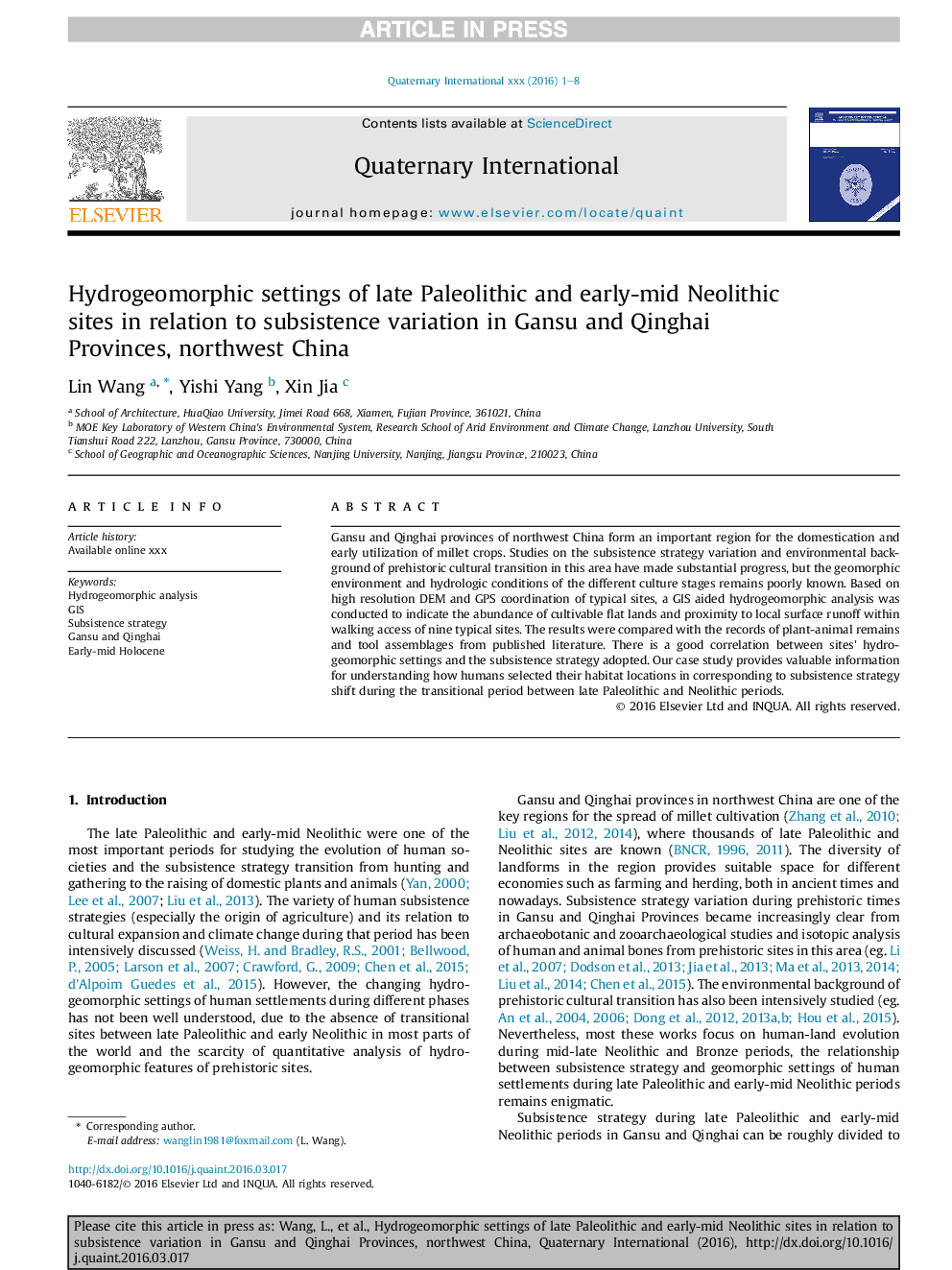| Article ID | Journal | Published Year | Pages | File Type |
|---|---|---|---|---|
| 5114102 | Quaternary International | 2016 | 8 Pages |
Abstract
Gansu and Qinghai provinces of northwest China form an important region for the domestication and early utilization of millet crops. Studies on the subsistence strategy variation and environmental background of prehistoric cultural transition in this area have made substantial progress, but the geomorphic environment and hydrologic conditions of the different culture stages remains poorly known. Based on high resolution DEM and GPS coordination of typical sites, a GIS aided hydrogeomorphic analysis was conducted to indicate the abundance of cultivable flat lands and proximity to local surface runoff within walking access of nine typical sites. The results were compared with the records of plant-animal remains and tool assemblages from published literature. There is a good correlation between sites' hydrogeomorphic settings and the subsistence strategy adopted. Our case study provides valuable information for understanding how humans selected their habitat locations in corresponding to subsistence strategy shift during the transitional period between late Paleolithic and Neolithic periods.
Keywords
Related Topics
Physical Sciences and Engineering
Earth and Planetary Sciences
Geology
Authors
Lin Wang, Yishi Yang, Xin Jia,
